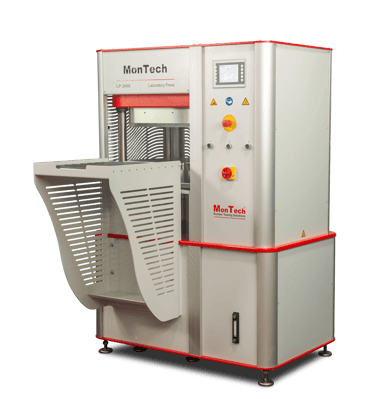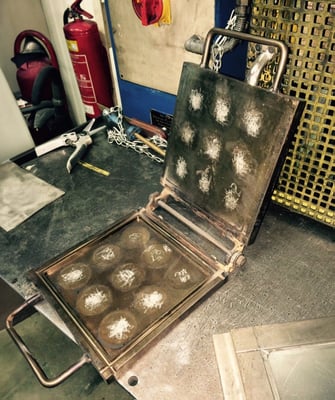
Accurately achieving repeatable physical testing results relies heavily on the quality of samples and their preparation. This article will delve into these factors, shedding light on the consequences of inadequate sample preparation. By following these guidelines, you can be confident in the quality of your sample preparation.
|
Lab Press Design: Aging, used, or low quality lab presses often have trouble creating perfectly uniform samples. This is due to the press' inability to hold correct temperate, maintain platen parallelism or consistent pressure - all according to ASTM D3182. When it comes to preparing rubber samples using a rubber lab press, there are crucial factors to consider to ensure the samples being produced yield relevant results in testing. ASTM D3182 describes specifications of lab presses for rubber sample preparation as follows:
When it comes to selecting a lab press and its options, there are numerous factors to consider. From the specific testing applications to the scale of production, international standards, efficiency, cost considerations, and safety concerns - each element should be contemplated when deciding what is right for a laboratory. Every MonTech Lab Press meets all requirements of ASTM D3182.
|
 |
 |
Distorted / Worn Mold Surface: One of the most common causes of defective samples has to do with the quality of the mold in which the sample is being cured and pressed. Often, the plating on the surface of the mold can become worn and peel off after extensive use. This can effect the uniformity of the samples being produced. Another key factor to mold surface is parallelism. It is important that the surface of the mold is perfectly parallel to the cover plate. Again, extensive use of molds can lead to slight warping, which in turn will affect the uniformity of the samples being prepared. Following ASTM D3182, mold surfaces shall be clean, highly polished and stainless steel. Typically, mold thickness shall be 10mm and above. Molds of this design will provide the best durability and repeatable in test results for the duration of usage.
|
|
Sample Cutters / Dies: After preforms are produced in the lab press, it is also important to create uniform samples with the aid of sample cutters, like the MonTech P-VS 3000. With precision sample cutters, it is critical to have sharp, unworn blades that cut at a 90° angle. Imprecise cuts can cause variations of up to 100% in elongation at break readings, or even more if the cutting edge is damaged. Even hardened cutting dies are subject to wear – cutting dies must be replaced or re-sharpened at least every 2 to 3 years. Dimensional tolerances of cutting dies and cut samples are very tight – in most cases less than 0.05 mm in width and 0.10 mm in thickness. Consistent cutting results can only be achieved with highly precise monoblock cutting dies.
|
|
|
|
Incorrect Mold Filling: Incorrect mold filling can result in irregularities on the surface of samples as well as variations of density, as can be seen in the image on the top left. As a result, incorrect mold fill can lead to variations in results in hardness testing and tensile testing, as well as other physical testing applications. Operator influence can create inconsistencies in mold fill, often by inconsistent weight or dimensions of samples, or their placement in the mold. The bottom image is a flow chart describing how to address problems of incorrect mold fill by automating simple processes to remove the chance of operator influence. |
|
Effects of Poor Sample Preparation: The effects of poor sample preparation can be small or great, depending on the severity of the issue causing it. The graphs on the right show the excessive variations in test results that can occur in tensile and hardness testing. In order to maintain accuracy and repeatability it is important to be cognizant of every step in the process chain of sample preparation, from sampling to molding and cutting - and be sure that each instrument being used meets relevant standards. If your laboratory is getting inconsistent test results there is a chance that the issue isn't the material or testing instrument, but an issue with preparation of the samples being tested. |
|
With physical testing, it is paramount to have consistent, uniform samples. MonTech has a wide range of solutions available for sample preparation. Learn more about our Rubber Laboratory Presses and Sample Cutters!